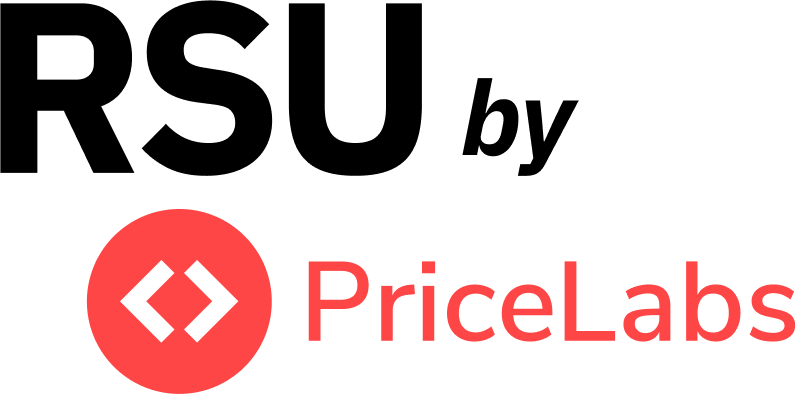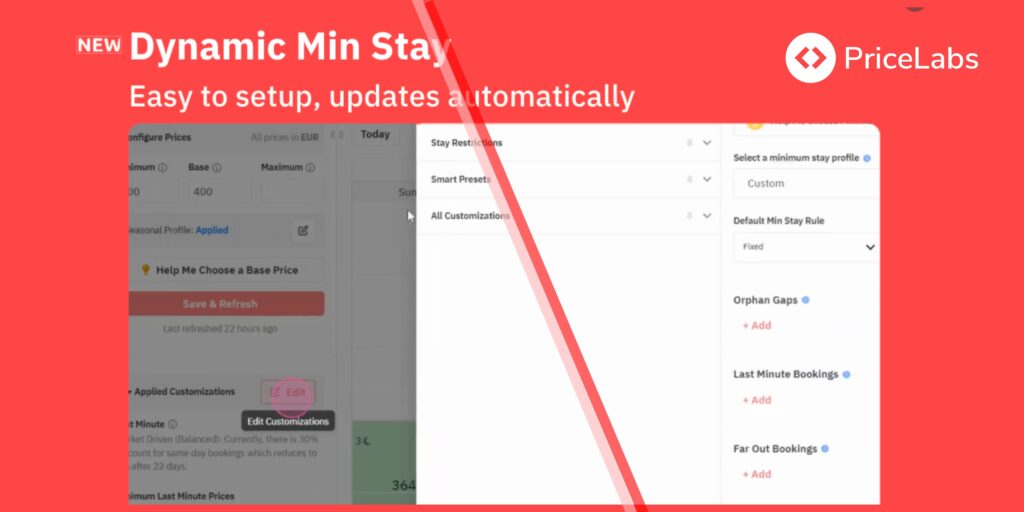Every property manager has wrestled with the same question: what’s the right minimum stay rule to balance revenue, operations, and guest expectations? Stick to a rigid three-night minimum, and you might miss last-minute bookings. Open up to one-night stays, and you invite operational chaos. Now, PriceLabs is offering a different approach with its new feature, Dynamic Min Stay. Instead of setting static rules, this tool adjusts length of stay settings based on real-time booking trends and demand patterns.
It’s not magic, but it is a practical upgrade. And for managers already using dynamic pricing, this could be the next obvious step in getting more value out of each listing.
Static Minimum Stay Rules Create Gaps, Friction, and Missed Revenue
Most managers set minimum stay rules once, then leave them in place. Maybe it’s a three-night minimum on weekends or a seven-night rule during high season. These fixed policies are simple, but not always smart. They can block potential bookings or leave short gaps unfilled.
Dynamic Min Stay responds to that. It adjusts minimum stay settings based on real-time booking trends and demand patterns. Here’s what that means in practice:
- If there’s a small calendar gap between two bookings, the tool lowers the minimum stay just for that slot, so it can be filled.
- For peak season dates far in the future, it raises the minimum to prioritize longer, more valuable bookings.
- During slow periods, it may lower stay requirements — within your defined limits — to help attract shorter bookings.
- Owner-set rules and hard minimums are always respected.
The goal is to turn more nights into bookable ones, without the manager having to constantly tweak calendars.
Why a Flexible Minimum Stay Strategy Outperforms Fixed or One-Night Policies
PriceLabs tested Dynamic Min Stay in over 300 markets. The results were clear: properties using it saw better occupancy and more revenue than those relying on fixed rules or allowing one-night bookings across the board.
Here’s why:
- Rigid rules often create unbookable nights and leave money on the table.
- One-night stays increase occupancy but come with more cleaning, turnover, and coordination.
Dynamic Min Stay sits in between. It fills gaps with short bookings, prioritizes longer stays where it makes sense, and shifts strategy as demand changes. Once initial preferences are set, Dynamic Min Stay handles ongoing adjustments automatically, no regular tweaks required.
Designed for Portfolios: Bulk Control with Flexibility and Transparency
Dynamic Min Stay is built with professional managers in mind. Whether you’re managing ten listings or several hundred, you can now apply settings to individual properties, groups, or your entire portfolio. The tool offers previews of recommended rules month by month, and users can override or revert changes at any time.
It’s not a black box. For example, users can view how stay settings vary across the calendar, see suggested changes, and make manual adjustments where needed. It’s a flexible layer that automates tedious decisions while keeping you in control.
Conclusion: A Smarter Way to Manage Minimum Stays
Dynamic Min Stay doesn’t replace strategy. It replaces the busywork that gets in the way of applying it at scale. If you’ve ever lost a booking because your minimum stay rule didn’t match guest needs, or if you’ve wasted time manually adjusting calendars, this tool is built for you.
It boosts revenue by helping you capture short but valuable bookings. It reduces operational hassle by preventing unnecessary turnovers. And it gives you control through customizable rules and override options.
In a market where margins are tight and efficiency matters, using data to rethink minimum stay rules might be one of the most practical upgrades a manager can make.
Uvika Wahi is the Editor at RSU by PriceLabs, where she leads news coverage and analysis for professional short-term rental managers. She writes on Airbnb, Booking.com, Vrbo, regulations, and industry trends, helping managers make informed business decisions. Uvika also presents at global industry events such as SCALE, VITUR, and Direct Booking Success Summit.








